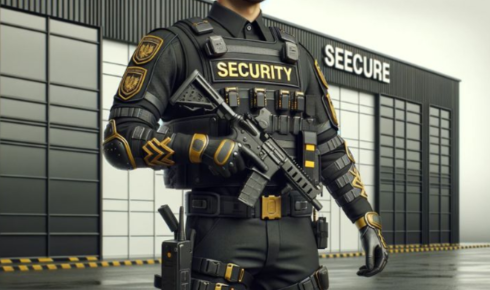Why Security Guards Are Critical in Emergency Response Protocols

Emergencies unfold without warning, turning normal routines into chaos in seconds. From fires and medical crises to active threats or natural disasters, the first few moments are crucial. While emergency services are trained to respond, they often arrive after the initial shock has passed. That’s where on-site personnel play a vital role, and among them, security guards often serve as the first line of organized response. Their presence, training, and immediate action can shape the outcome long before backup arrives.
The Frontline Presence in Unpredictable Situations
In fast-moving emergencies, delay means danger. Security guards are already stationed across commercial complexes, hospitals, schools, and event venues. Their visibility isn’t just for show—they are positioned to respond in real-time. Being on the ground allows them to assess unfolding scenarios and act immediately.
Trained Security Guards React with Precision
Security guards, by definition, are trained professionals who manage threats and disruptions. Their role extends far beyond watching surveillance feeds or checking IDs. In emergencies, their training in evacuation, first aid, crowd control, and communication kicks in. They’re taught to stay calm when others panic. Their ability to act swiftly and make decisions under pressure can significantly reduce casualties or damage. That’s what makes security guards an essential layer in emergency response plans.
Security Guards Bridge the Gap Before Help Arrives
Time is often the enemy during a crisis. While calling 911 or alerting emergency services is a necessary first step, the wait that follows can be deadly. Security guards fill this critical window. They implement safety protocols, direct people to exits, or even administer CPR if needed. Their role isn’t just reactive—they can anticipate trouble based on patterns and behavior, often preventing escalation before others even notice. This makes security guards not just responders but preventers.
Rapid Communication Channels Led by Security Guards
In large facilities or public spaces, communication can crumble under stress. Security guards are trained to keep lines open. They coordinate with internal teams, emergency responders, and control centers to ensure accurate updates flow continuously. Miscommunication during emergencies can create confusion and risk. But with security guards managing information flow, actions remain coordinated and focused. This aspect of their work, though often invisible, is one of the most critical links in the emergency chain.
Integrated Role in Company Emergency Protocols
Security guards aren’t just add-ons to safety—they’re part of most organizations’ formal emergency plans. From running drills to identifying exits and knowing fire panel systems, their familiarity with the site makes them invaluable. Guards often work with management to develop site-specific strategies, placing them at the heart of every response protocol. In fact, many protocols are built around the assumption that security guards will act first. Their local knowledge and physical presence cannot be replaced by remote responders.
Helping Ensure Emotional and Physical Safety
In emergencies, people don’t just need protection—they need reassurance. Security guards often become the face of calm authority. By guiding the vulnerable, protecting exits, or offering assistance to the injured, they restore a sense of order. This emotional grounding helps prevent stampedes, chaos, or confusion that could worsen the situation. Their uniforms symbolize safety, and in tense moments, that symbol can be just as powerful as any physical action.
Conclusion
Security guards are more than silent sentinels patrolling our spaces. They are trained first responders, communicators, protectors, and leaders in the most critical of moments. From quick medical aid to coordinated evacuation or simple crowd control, their contribution in emergencies is indispensable.




